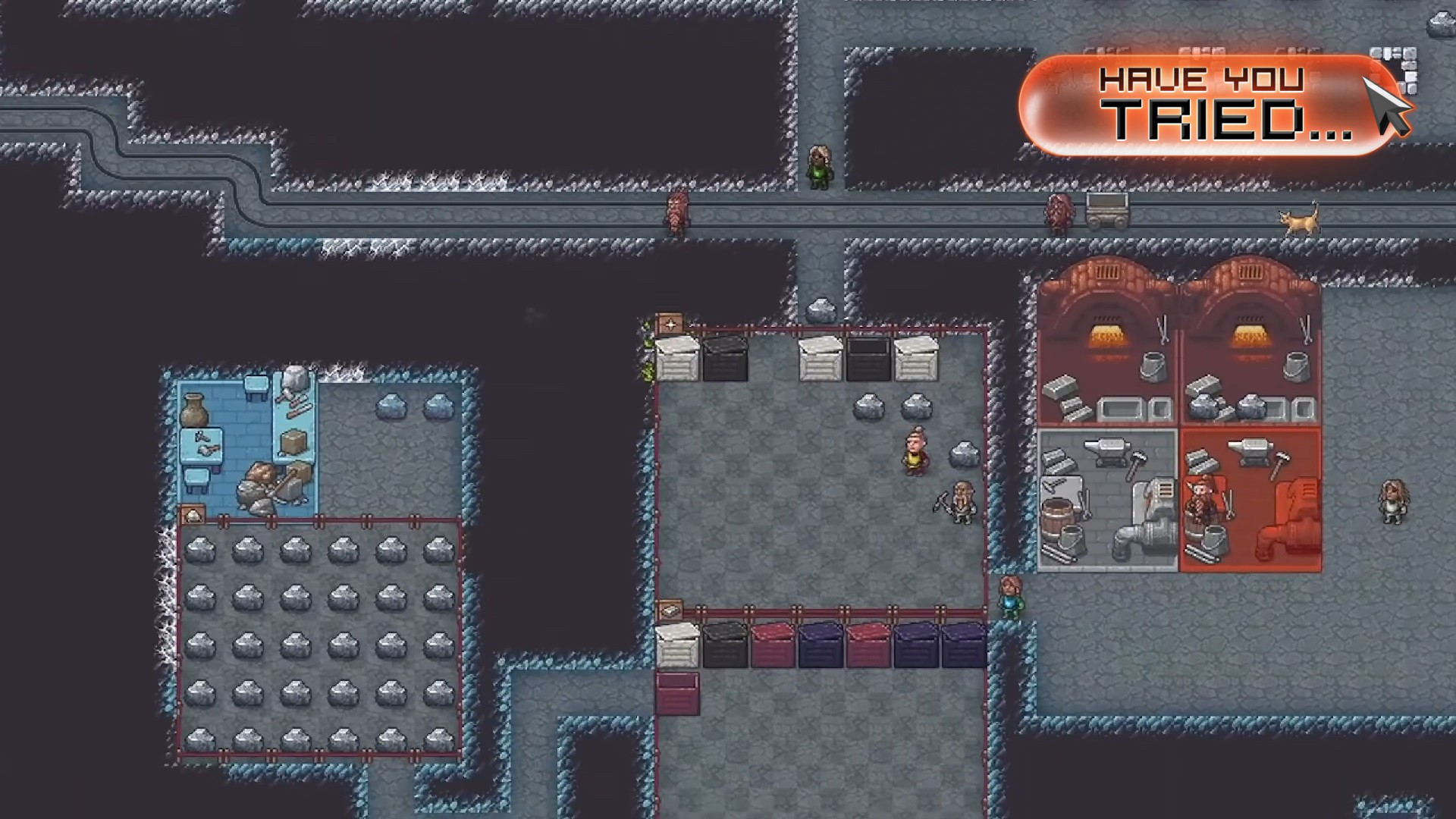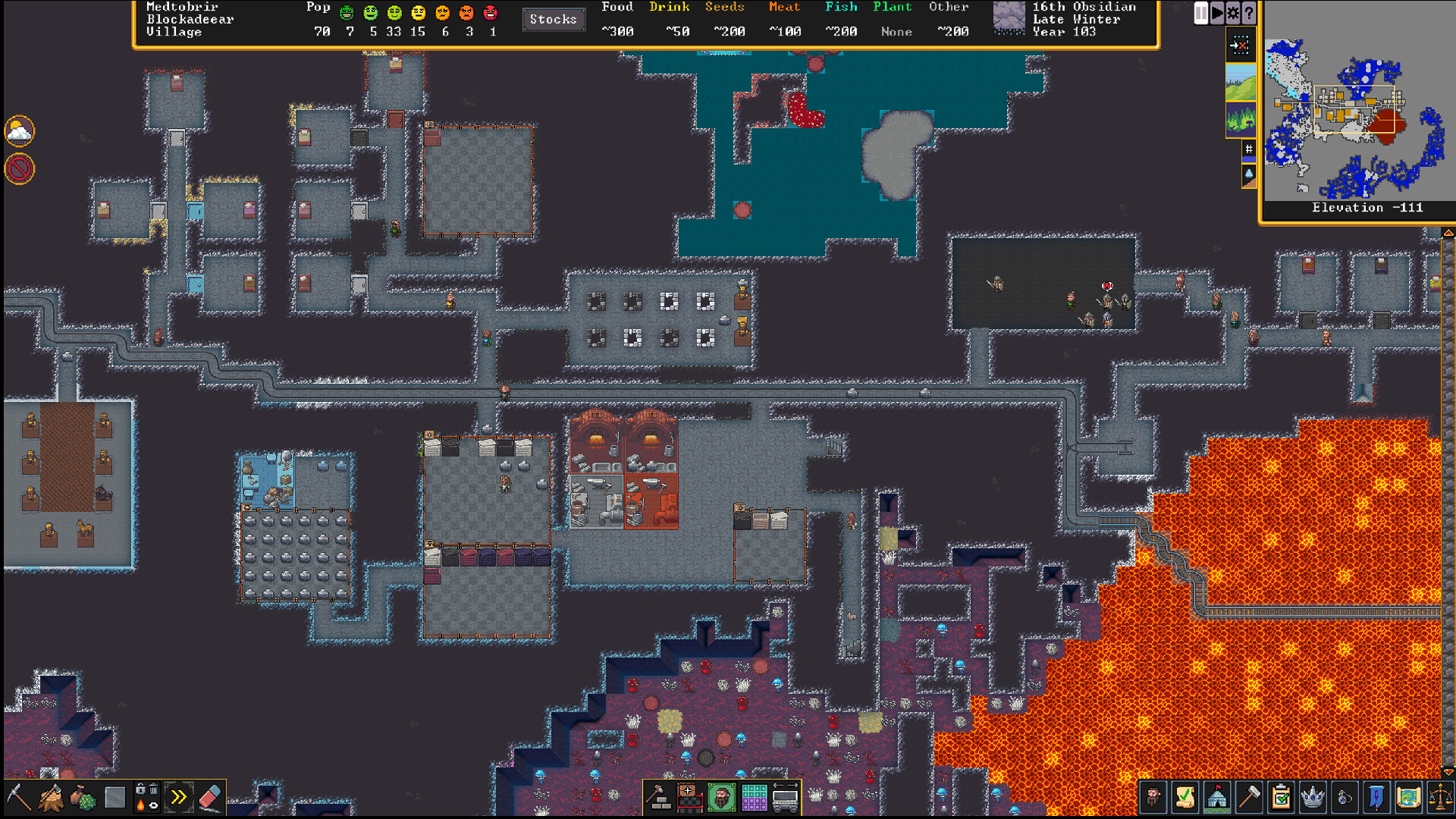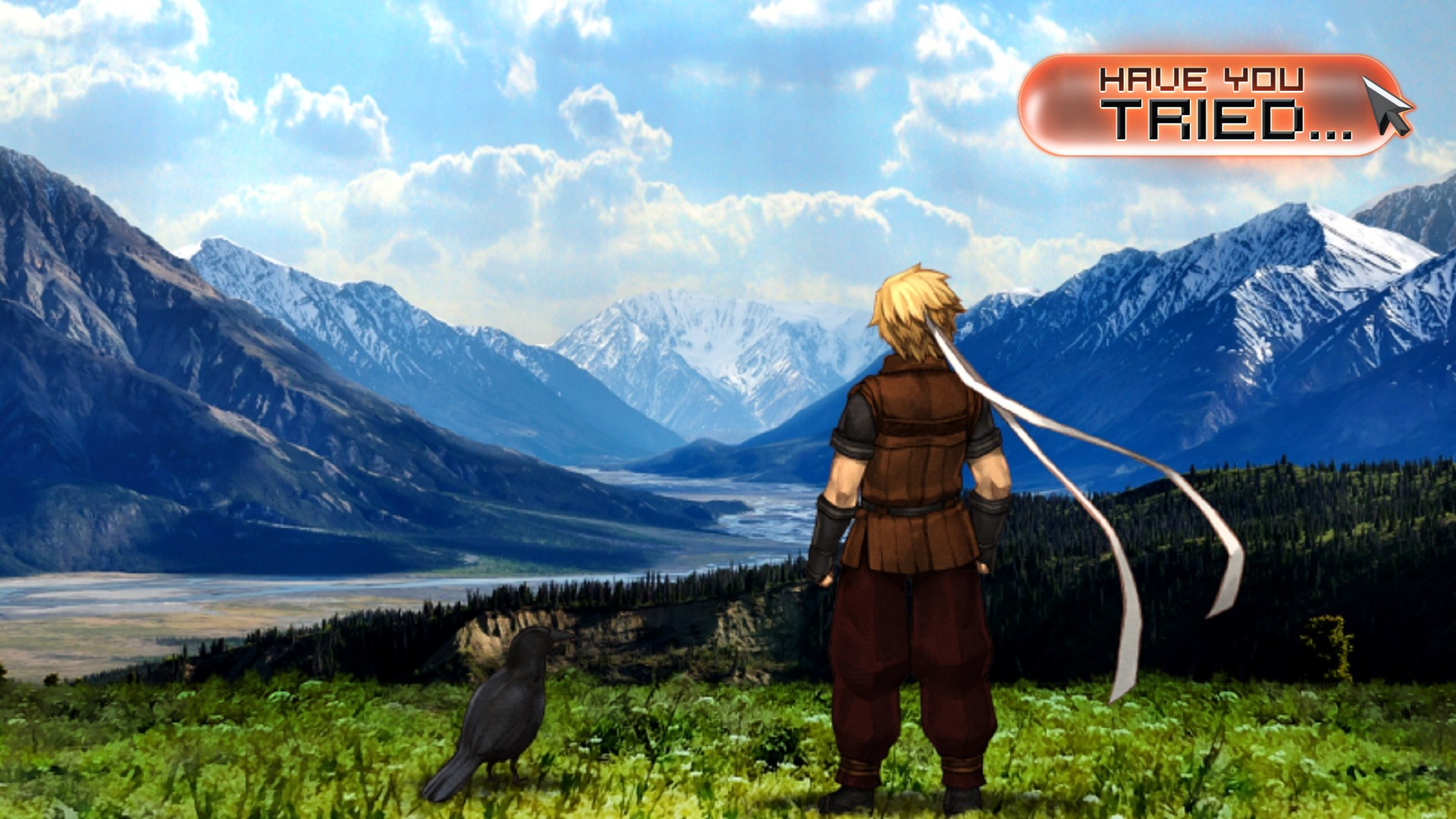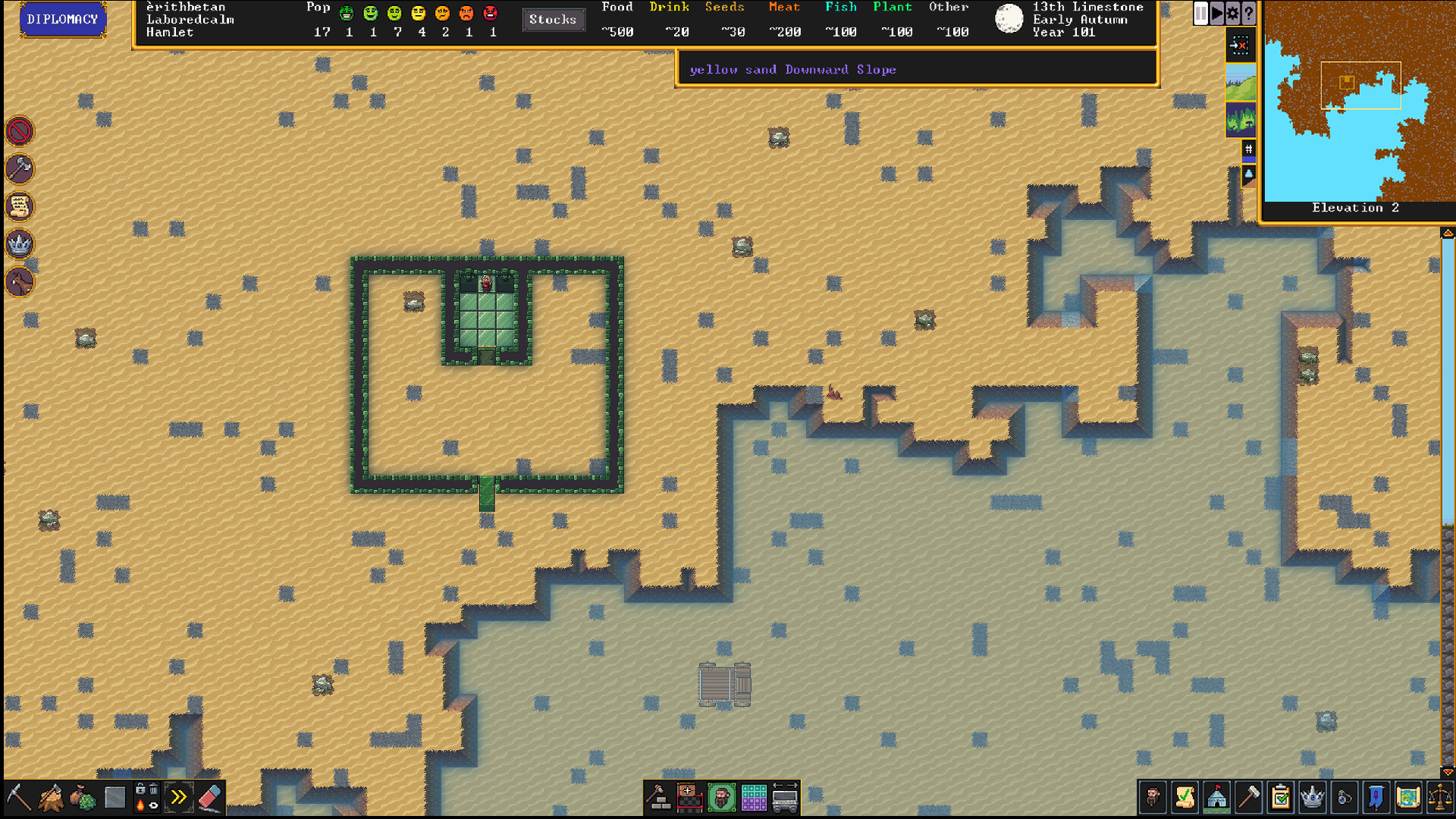
It feels almost impossible to describe the slow-burn phenomenon of Dwarf Fortress. 25 years in the making, a game defined by its ASCII art and eldritch horrors evolved over the decades to become one of the deepest, most complex management games in the world, with a diehard community fully invested in its bizarre intricacies. Now, it's finally burst into the mainstream with a Steam release filled with beginner-friendly introductions, bringing this hidden gem into the light.
Dwarf Fortress opens to your band of adventurers bringing their cart to a stop in a tree-filled valley. In another game, that valley would be your Starry, Dew-filled home, and you'd have to set about chopping down those trees to clear space for your thriving new farmland. In Dwarf Fortress, the trees will still fall, but only some of your party will be chopping them down. The rest need to set about burrowing into the earth, carving out the tunnels and caverns that will form your Fortress.
Once you've hewn your first few rooms from the rock, they need filling. Dwarves need a place to rest, so all that fallen wood becomes beds to sleep in and chairs and tables to eat at. Food is crucial - your first task simply surviving until Spring - so I plow some underground fields to keep supplies up. The top-down perspective means that space fills up quickly, so entire caverns are dedicated to storage. And Dwarfs want to make things, so dedicated crafting areas have to be set up.
A lot of that might seem like traditional management sim fodder, but Dwarf Fortress sets itself apart in a handful of notable ways. The first is a hint of the high fantasy that dwells deeper within - lore and storytelling is a key part of your Dwarfs world, and it's subtly woven into each Fortress you create. But far more important is the game's depth - both literal and figurative.
Deepest depths


Have you tried... the sleeper hit, must-play JRPG of 2022, Astlibra Revision?
One key aspect of Dwarf Fortress is its verticality. The first time you strike the earth is just the start of what will inevitably become a labyrinthine sprawl of caverns and corridors leading in every conceivable direction, but most importantly, up and down. The deeper you delve, the more you uncover, but this isn't a simple race to the bottom - different layers of your Fortress can do different things better than others. Certain types of cavern, for example, are best for farming. Other layers are filled with specific types of mineral.
Successful management of the Fortress requires a holistic sense of every layer - while Miners are expanding the deepest depths, the surface matters too. I think I only got through my first winter because I had the foresight to turn an impressive autumn harvest of apricots into wine. My Dwarfs are constantly tipsy, thanks in no small part to my inability to work out more traditional approaches to keeping them well-hydrated.
That takes me on to the other facet of Dwarf Fortress' depth. It is astonishingly complex, every individual part of its myriad crafting menus seeming to open another menu. Every item has a purpose, every trinket and knick-knack relevant somehow, somewhere. Even if it's as simple as making sure you've got a barrel to store all your leftover apricot wine in, it feels as though Dwarf Fortress has thought of everything.
Sign up to the GamesRadar+ Newsletter
Weekly digests, tales from the communities you love, and more
That attention to detail is found everywhere; wood must become charcoal before it can light a furnace; earth becomes mud if it gets wet. I wanted to know whether the natural beehives on the surface could be a potential source of food - while most games might be content to simply let you harvest some sweet honey every now and again, Dwarf Fortress gives you a crash course in hive management with a dedicated mechanic for what happens when your bees 'swarm'.

"The culmination of a decades-long journey, Dwarf Fortress is an astonishing feat, and we may never see anything like it ever again."
I'm only just scratching the surface of what Dwarf Fortress has to offer. There are entire construction menus I've barely even looked at; one is dedicated to managing the flow of water for drinking and industrial needs; another, far more ominous, is simply titled 'Traps'. Dwarf Crimes are enough of a problem that there's a Justice menu that tracks them - but only if you've assigned a Sheriff. Expand your population enough, and you could establish an entire administrative core to run your Fortress.
It might start out as an almost Sims-like management game, but there's an entire city-builder waiting to be discovered as you dig deeper. But like most city builders, there are also potentially apocalyptic forces at play, and tales of the monsters that lurk within the depths of Dwarf Fortress are almost as legendary as the Balrog of Moria itself.
Perhaps it's not just the phenomenon of Dwarf Fortress that's near-impossible to describe. Perhaps it's the game itself. The stories it generates are as compelling as the most bizarre, harrowing creations to come out of games like The Sims, the worlds it's capable of creating as intricate and labyrinthine as the maze you dig beneath the earth. The culmination of a decades-long journey, Dwarf Fortress is an astonishing feat, and we may never see anything like it ever again.
Dwarf Fortress is out now on PC.

I'm GamesRadar's news editor, working with the team to deliver breaking news from across the industry. I started my journalistic career while getting my degree in English Literature at the University of Warwick, where I also worked as Games Editor on the student newspaper, The Boar. Since then, I've run the news sections at PCGamesN and Kotaku UK, and also regularly contributed to PC Gamer. As you might be able to tell, PC is my platform of choice, so you can regularly find me playing League of Legends or Steam's latest indie hit.


